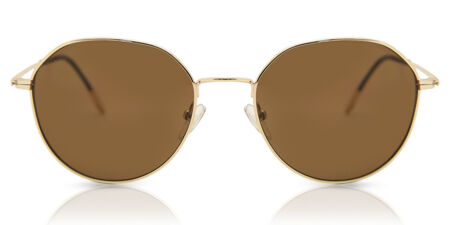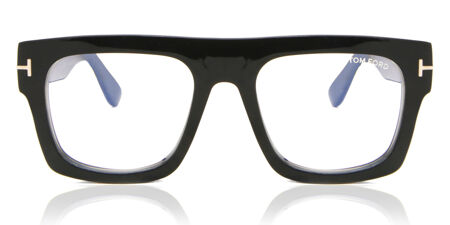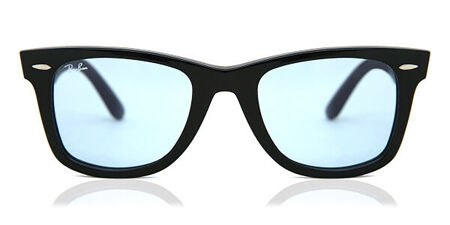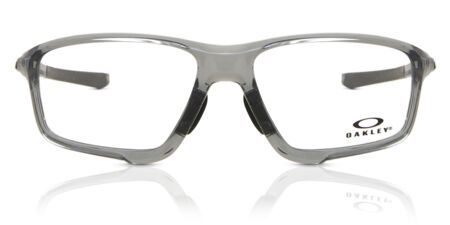Stylish Kids Glasses

Does My Child Need Glasses?
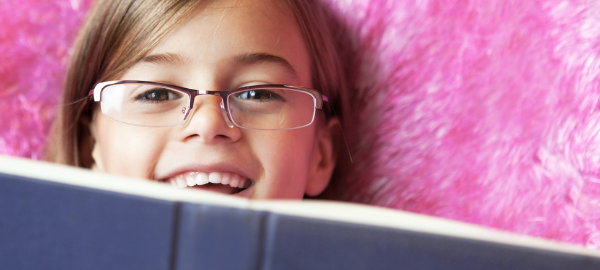

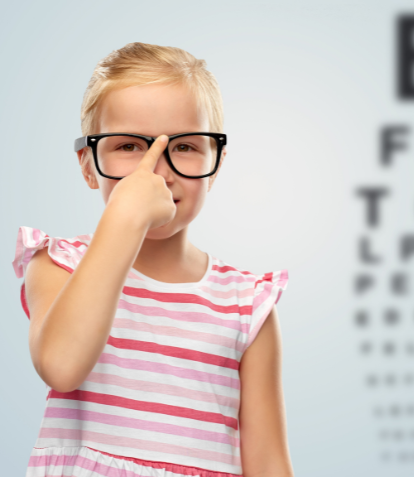
Does My Child Need Glasses?
If you’re wondering, ‘does my child need glasses?’ you’re in the right place. Your child’s eyesight is important, and it can be challenging to determine whether or not they need prescription glasses at a young age. Communication can be an issue, as your little one might not be able to tell you they’re having sight problems. Undetected vision issues can impact your child’s everyday life. All children should get an eye exam, even if there is no indication that they may be struggling to see, as they may be unaware they are seeing things incorrectly. Therefore, annual eye checks are important for your little one.
This article will cover the primary signs to look out for to help you understand if your child needs glasses. Following this article, if you have concerns about your child’s sight, please visit your local optician for a professional eye test.
Why do children need glasses?
There are many reasons why a child may require glasses. These can include the following:
• Improving vision (for close-up vision, faraway vision or both)
• Strengthening vision in a weak or lazy eye
• Improving the position of their eyes (crossed eyes or misaligned eyes)
• Providing protection if they have poor vision in one eye
Signs your child needs glasses
Several signs indicate that your child may need glasses:
1. Squinting eyes
If you have noticed that your little one frequently squints to look at something, they may have a refractive error. This condition affects how well eyes focus on an image, and squinting can help focus their vision. Another condition related to squinting is amblyopia. Luckily, the condition can be corrected if identified early.
2. Excessive tearing, rubbing eyes and eye fatigue
Maybe you’ve noticed your child rubs their eyes more often than usual and complains of tired eyes. These signs could indicate your child’s eyes are overworked. Excessive tearing and eye fatigue can occur due to blue light emitted from digital screens, which are impossible to avoid in today’s society. We advise giving blue light glasses a go, which will help to block out harmful blue light. This way, your little one can wear these glasses when watching TV, doing their homework on the computer or staring at the school projector.
3. Using their finger to read
You may have noticed during reading time with your child that they have started using their finger to read. Often, this can be a method to help them keep on track with the words on the page. However, it could also be a sign of amblyopia, a disorder associated with eye alignment problems.
4. Covering one eye to see
Another sign your child could have amblyopia is if they cover one eye to see clearly. An easy way to check if your child is having problems is to cover each of their eyes and ask what they can see and which eye sees more clearly.
5. Sitting too close to screens
Every child loves to sit close to the television when their favourite show is on. But if they do it often, there may be a chance your child has myopia. Myopia is also known as nearsightedness, which involves seeing objects close up clearly, but things further away are blurry. Try asking your little one to sit further away from the TV and ask if they can still see the images clearly. If not, it’s time to book an appointment with the local optician.
6. Complaining about blurry vision at distance
Your little one might complain about not seeing the players clearly on the football field or may struggle to see the teacher at the front of the classroom. These problems could indicate they have nearsightedness and will require distance-wear glasses. However, if your child complains about close-up objects looking blurry, they may have hyperopia. This is when someone can see things close to their eye but has problems seeing objects far away.
7. Losing place while reading
Asking your child to read out loud can improve their literacy skills and help you to monitor their eyesight and ability to read a text. If your child indicates to you that they cannot make sense of what is on a page, or they say that text gets distorted or blurry when reading, they may have a vision problem. Losing their place frequently could indicate strabismus (crossed eyes) or astigmatism, which means light is focused at more than one place in the eye. This can cause blurry vision, headaches and eye strain.
8. Extreme light sensitivity and headaches
Does your little one prefer being in darker rooms or suffer from headaches when outside on a sunny day? Your child could be photophobic, which involves sensitivity to light. Therefore an option to help your little one could be special lenses or UV protection sunglasses. These frames will help to reduce the severity of your child’s sensitivity to light.
Does my child really need glasses?
Suppose your child is exhibiting any of the above eight signs. In this case, we recommend booking a doctor’s appointment for a professional diagnosis. Your local optician will be able to check their eye health and diagnose any issues they may have. However, just because your child is sitting too close to the TV does not necessarily mean they require corrective glasses, so wait to see what your optician says.
The best place to buy children’s prescription glasses
SmartBuyGlasses is a great place to find children’s prescription glasses following an optician’s appointment. Once you have the correct prescription, you can order a pair of frames easily and quickly online. Unsure if your little one will like the glasses? Give our Virtual Try-On tool a go, and allow them to wear the glasses digitally before you buy. Best of all, we offer a 100-day return policy on all frames, so you can send them back if your child changes their mind!
Does My Child Need Glasses?
If you’re wondering, ‘does my child need glasses?’ you’re in the right place. Your child’s eyesight is important, and it can be challenging to determine whether or not they need prescription glasses at a young age. Communication can be an issue, as your little one might not be able to tell you they’re having sight problems. Undetected vision issues can impact your child’s everyday life. All children should get an eye exam, even if there is no indication that they may be struggling to see, as they may be unaware they are seeing things incorrectly. Therefore, annual eye checks are important for your little one.
This article will cover the primary signs to look out for to help you understand if your child needs glasses. Following this article, if you have concerns about your child’s sight, please visit your local optician for a professional eye test.
Why do children need glasses?
There are many reasons why a child may require glasses. These can include the following:
• Improving vision (for close-up vision, faraway vision or both)
• Strengthening vision in a weak or lazy eye
• Improving the position of their eyes (crossed eyes or misaligned eyes)
• Providing protection if they have poor vision in one eye
Signs your child needs glasses
Several signs indicate that your child may need glasses:
1. Squinting eyes
If you have noticed that your little one frequently squints to look at something, they may have a refractive error. This condition affects how well eyes focus on an image, and squinting can help focus their vision. Another condition related to squinting is amblyopia. Luckily, the condition can be corrected if identified early.
2. Excessive tearing, rubbing eyes and eye fatigue
Maybe you’ve noticed your child rubs their eyes more often than usual and complains of tired eyes. These signs could indicate your child’s eyes are overworked. Excessive tearing and eye fatigue can occur due to blue light emitted from digital screens, which are impossible to avoid in today’s society. We advise giving blue light glasses a go, which will help to block out harmful blue light. This way, your little one can wear these glasses when watching TV, doing their homework on the computer or staring at the school projector.
3. Using their finger to read
You may have noticed during reading time with your child that they have started using their finger to read. Often, this can be a method to help them keep on track with the words on the page. However, it could also be a sign of amblyopia, a disorder associated with eye alignment problems.
4. Covering one eye to see
Another sign your child could have amblyopia is if they cover one eye to see clearly. An easy way to check if your child is having problems is to cover each of their eyes and ask what they can see and which eye sees more clearly.
5. Sitting too close to screens
Every child loves to sit close to the television when their favourite show is on. But if they do it often, there may be a chance your child has myopia. Myopia is also known as nearsightedness, which involves seeing objects close up clearly, but things further away are blurry. Try asking your little one to sit further away from the TV and ask if they can still see the images clearly. If not, it’s time to book an appointment with the local optician.
6. Complaining about blurry vision at distance
Your little one might complain about not seeing the players clearly on the football field or may struggle to see the teacher at the front of the classroom. These problems could indicate they have nearsightedness and will require distance-wear glasses. However, if your child complains about close-up objects looking blurry, they may have hyperopia. This is when someone can see things close to their eye but has problems seeing objects far away.
7. Losing place while reading
Asking your child to read out loud can improve their literacy skills and help you to monitor their eyesight and ability to read a text. If your child indicates to you that they cannot make sense of what is on a page, or they say that text gets distorted or blurry when reading, they may have a vision problem. Losing their place frequently could indicate strabismus (crossed eyes) or astigmatism, which means light is focused at more than one place in the eye. This can cause blurry vision, headaches and eye strain.
8. Extreme light sensitivity and headaches
Does your little one prefer being in darker rooms or suffer from headaches when outside on a sunny day? Your child could be photophobic, which involves sensitivity to light. Therefore an option to help your little one could be special lenses or UV protection sunglasses. These frames will help to reduce the severity of your child’s sensitivity to light.
Does my child really need glasses?
Suppose your child is exhibiting any of the above eight signs. In this case, we recommend booking a doctor’s appointment for a professional diagnosis. Your local optician will be able to check their eye health and diagnose any issues they may have. However, just because your child is sitting too close to the TV does not necessarily mean they require corrective glasses, so wait to see what your optician says.
The best place to buy children’s prescription glasses
SmartBuyGlasses is a great place to find children’s prescription glasses following an optician’s appointment. Once you have the correct prescription, you can order a pair of frames easily and quickly online. Unsure if your little one will like the glasses? Give our Virtual Try-On tool a go, and allow them to wear the glasses digitally before you buy. Best of all, we offer a 100-day return policy on all frames, so you can send them back if your child changes their mind!
How To Tell If My Glasses Are Blue Light
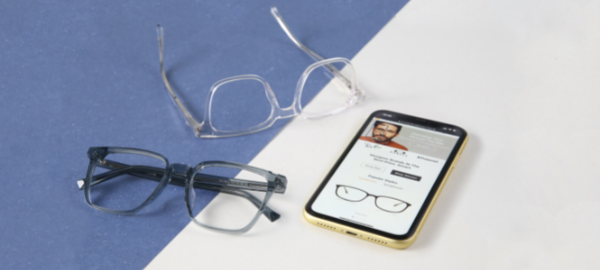
How To Tell If My Glasses Are Blue Light
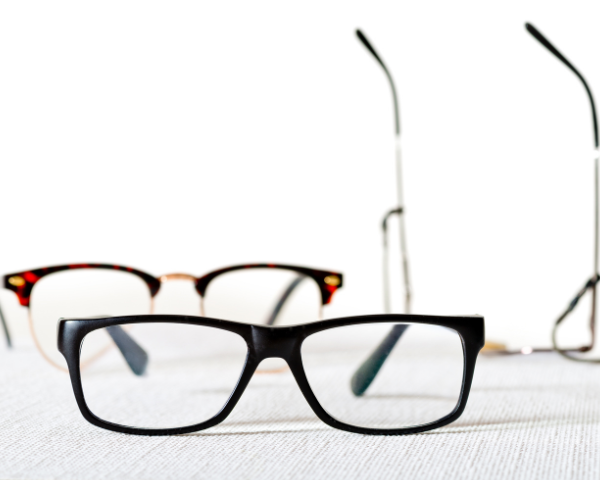
You’ve recently bought a pair of blue light glasses to help improve your vision and reduce eye strain while using digital devices. They look like any other prescription glasses, and you want to know if they work. So, how do you tell if your glasses are blue light?
In this article, we’ll walk you through how you can check whether or not your glasses have a blue light filter on the lenses. We’ll cover the essential aspects of how you can quickly tell if your glasses are blue light from your home. If you have doubts, you can also consult your optician or ask our opticians!
How to check my blue light glasses
When you want to check if your glasses are blue light, you can try the following:
RGB color chart
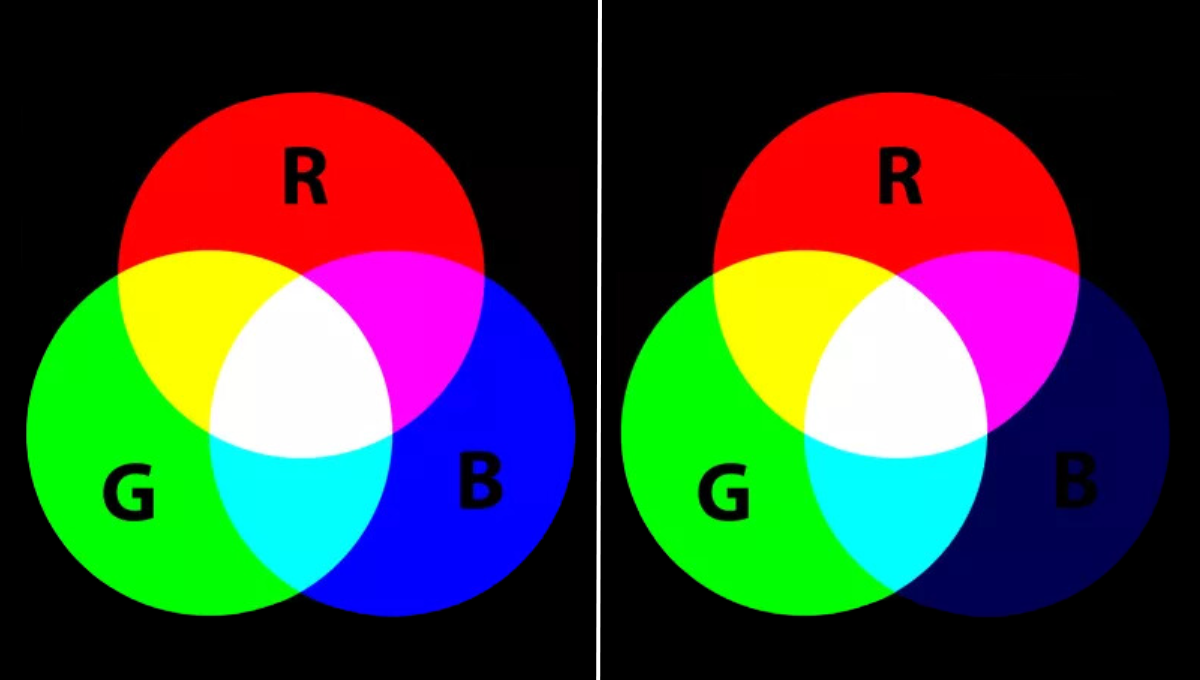
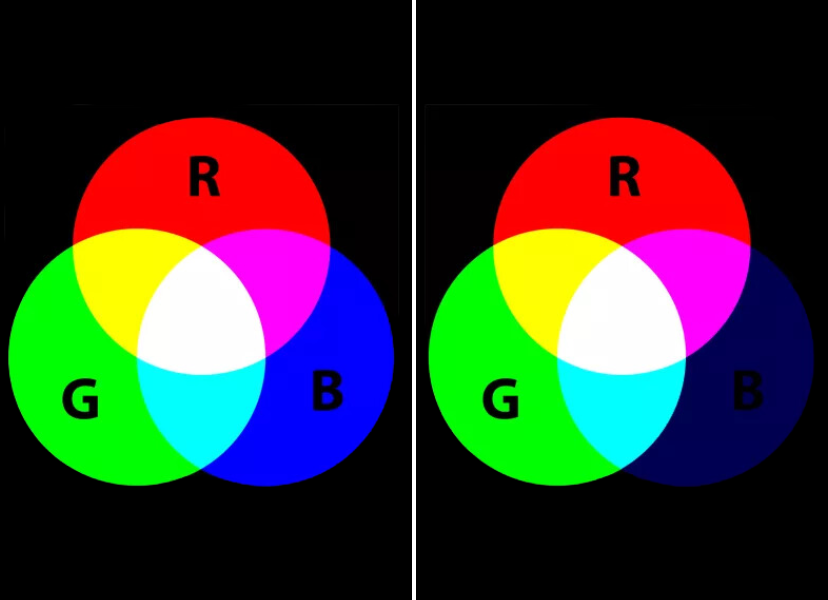
DID YOU KNOW?
Blue light glasses reduce the sleep problems we can experience after long periods in front of a screen.
When looking at this image with your blue light glasses, the blue circle should be very dark, if not black. Read more about this test and everything you need to know about what are blue light glasses.
The blue sky test
Wait for a clear day, then point your glasses at the sky. The lenses appear clear when worn normally, but they have a little yellow tint when they filter blue light.
You can observe the light being filtered when looking through the lenses at a bright blue sky. Computer glasses, for example, often have a faint yellow tint in the lenses and usually block out 30% of blue light.
Yellow tinted lenses
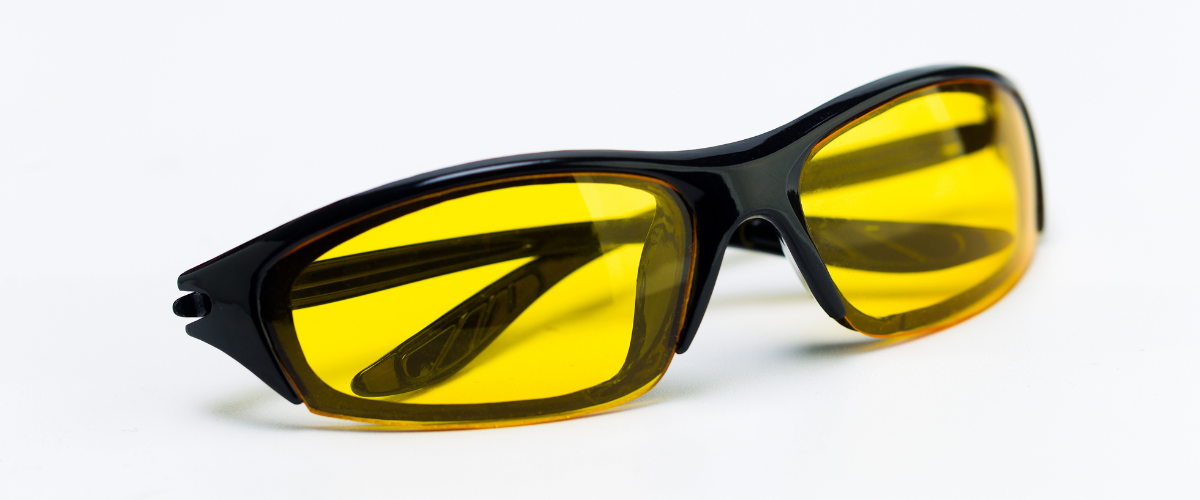
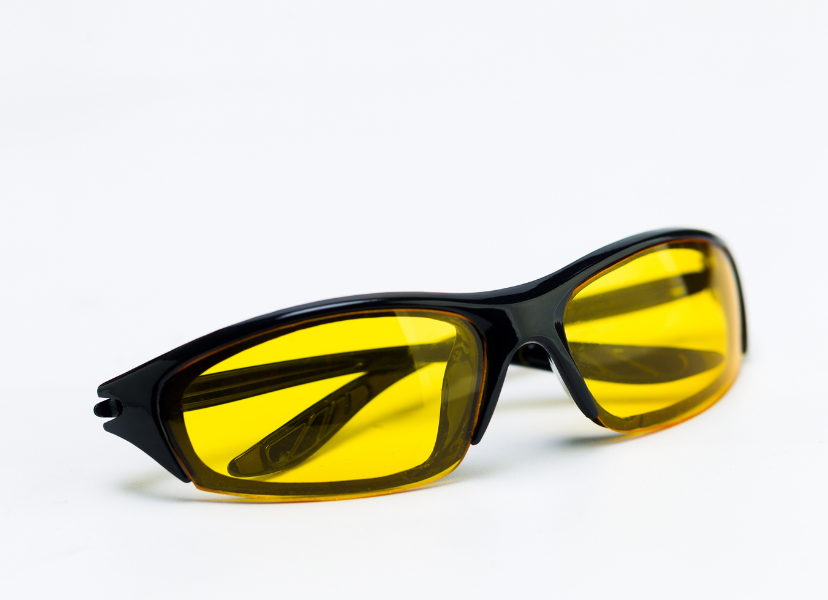
Depending on the types of glasses and use, there are various types of lens tints and levels of blue light blocking.
Gaming glasses, for example, can come with yellow or amber tints which filter blue light to help enhance your vision and gaming performance. Be sure to read all about what gaming glasses are and see if you need them. But why exactly are the lenses yellow?
Why are my blue light glasses yellow?
Our eyes can’t properly filter out blue light, and we are surrounded by it in and out of our homes. That’s why we use blue light lenses. Blue light is filtered out by the yellow lenses and changes the kind of light that reaches your eyes.
Not all blue light blocking glasses have a yellow tint, but the darker the tint, the more efficient the glasses are. The yellow tint helps filter the harsh blue light while letting other light pass through.
However, keep in mind that the technology used for blue light varies by manufacturer, so these tests do not guarantee that your glasses are blue light blockers! It’s always best to check the packaging, and directly contact the place you purchased the glasses.
Why are my blue light glasses so reflective?
Blue light glasses can be reflective due to the coating on the lenses that reflect the wavelength of light. If your blue light glasses are reflective, they filter blue light, which means they work.
Your blue light lenses will have different layers, each reflecting a specific range of light that helps reduce glare on the lens surface.
The light reflected off different types of coatings can be blue or even purple, depending on the manufacturer’s specific coatings. Anti-reflective quality is higher when there is a lower reflection on the lenses. You can see the reflections if you hold up your glasses in front of a light source, which is not very noticeable when wearing them.
Conclusion
You’ve read the benefits of wearing blue light glasses and have finally bought a pair, but you’re wondering how and if they work. There are various ways how to tell if your glasses are blue light and see if they are working.
Following this guide, you can comfortably test your blue light glasses at home with either the RBG color chart or the blue sky test. Blue light lenses usually have a tint and are reflective, which ensures that the blue wavelength is reduced.
So why not try it out yourself and learn all there is to know about blue light glasses and more eye care tips in our Optical Centre.
The 6 Best Affordable Sunglasses

Best Blue Light-Blocking Glasses for Kids
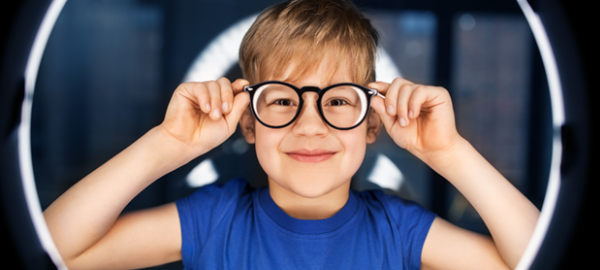
This Is Your Sign To Get Zodiac Sunglasses

What Are Progressive Lenses?
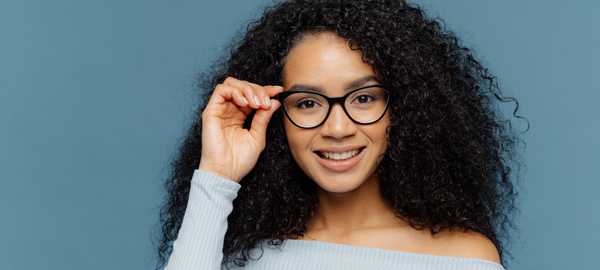
What Are Progressive Lenses?

Reviewed by
Maria Horan FBDO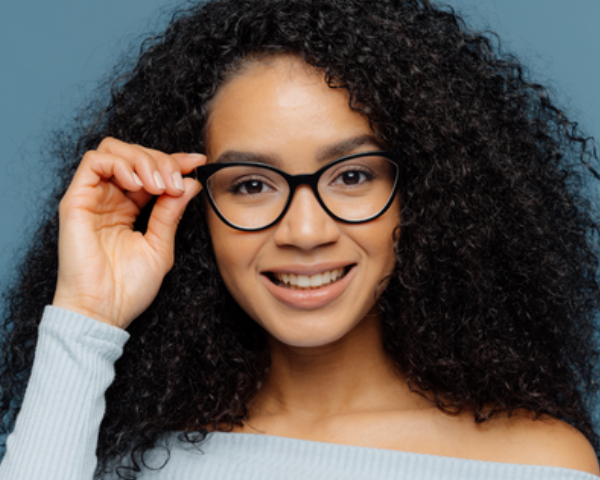
As the old saying goes, time waits for no man. Age catches up on all of us, and on our eyes too. Our body goes through many changes as we age, one of which is that our eyes begin to deteriorate.
After the age of 40, most people develop presbyopia, a condition that affects our close-up vision. With presbyopia, corrective lenses are needed for activities like reading or writing.
For those of us who already wear glasses to help with intermediate or distance vision, this can be a bit of a nuisance. Step forward progressive lenses, your three-in-one solution to the problem.
How do progressive lenses work?
Progressive lenses, also called multifocal lenses or varifocals, contain multiple prescriptions. Each prescription caters to a different field of vision so you can easily see things at far, intermediate and near distances with just one pair of glasses.
The upper portion of the lens is adapted for distance vision. It gradually blends into the intermediate prescription in the middle portion, which corrects anything arm’s length away from you (like your computer screen).
Finally, the lens increases in power towards the bottom section, designed for close-up tasks, like checking a price tag or using your smartphone.
Progressive lenses have no lines between the different prescriptions, so you have a smooth transition when switching between different viewing areas.
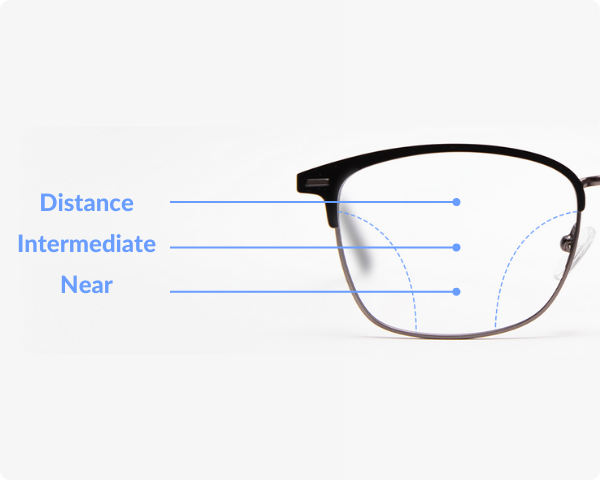
Do I need progressive lenses?
Whether or not you need progressive lenses depends on your vision requirements. If you have multiple prescriptions for a combination of vision problems like presbyopia, nearsightedness and farsightedness, then you’re a good candidate for a pair of progressives.
Presbyopia is caused by the gradual loss of your eye’s ability to focus on near objects and is a natural part of aging. Without progressive lenses, many individuals experience difficulty seeing both near and far objects clearly.
Progressives may be the best option if you are experiencing eye strain when focusing on text or other details at multiple distances.
Your eye care professional can perform an eye exam to determine if progressive lenses will help improve your vision and overall visual clarity and comfort at all distances.
Progressive lens types
We offer two different types of progressive lenses, premium and deluxe. Your choice between these two ultimately comes down to your personal preference.
Premium progressive lenses
Premium progressive lenses are our entry level range of progressives, with four lens index options available.
The most standard progressive lenses in the collection come with scratch-resistant and anti-reflective coatings, two features that are also found in the options higher up the scale. The “comfort” version has added UV 400 protection.
The options on the upper end of the premium scale also have UV400, as well as superhydrophobic coating and an aspheric shape. This shape makes them thinner and lighter than other versions, with 1.67 and 1.74 index versions available.
Deluxe progressive lenses
Deluxe progressive lenses are a step up from our premium options, offering a superior visual experience. There are three options available within the deluxe range.
All three of them come with the same features of the most complete option from the premium range, but they have several additional advantages.
Impact X protection comes as standard on all three deluxe options. This impact-resistant coating reinforces the lenses, so they can handle more adventurous lifestyles and are more forgiving when the odd mishap occurs.
Deluxe progressive lenses differ from their premium counterparts the most in one key aspect. Their viewing area is 30% wider than that of premium lenses.
This provides greater comfort, especially for near and intermediate vision, as these zones are enlarged the most noticeably.
This extra space maximises the smooth transition when switching from one viewing area to the next, and can reduce visual fatigue and peripheral distortion while wearing your glasses.
What's the difference between progressive lenses and bifocals?
Progressives and bifocals share the trait of containing more than one prescription, but there are some important differences between them. Bifocals have two separate prescription zones for near and distance vision. You’ll have your distance correction at the top, while your near vision correction is at the bottom.
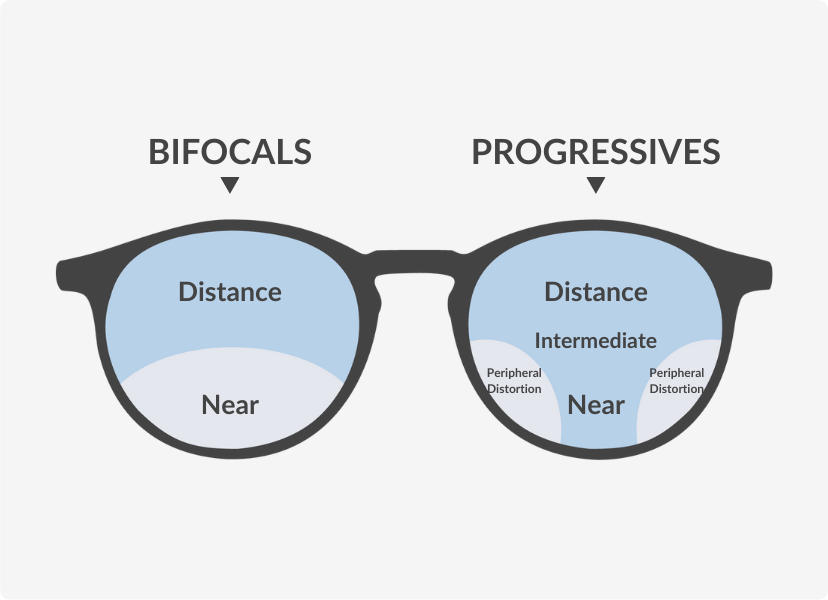
Bifocal lenses have a distinct line (called a segment line) between each value which causes an abrupt jump in your vision when the eye switches from viewing something at a far distance to a near one. At SmartBuyGlasses, we do not offer bifocals.
As already mentioned, progressive lenses work by combining three different prescriptions in each lens. They help correct all focal points without any visible lines between viewing zones, unlike bifocals. In a progressive lens, each area transitions gradually from one prescription to another, allowing smoother vision.
DID YOU KNOW?
Several people proposed designs for progressive lenses in the first half of the 19th century, but it was French engineer Bernard Maitenaz who created the first commercially successful progressive lens.
Benefits of progressive lenses
Progressives lenses offer a lot to wearers, in terms of vision correction, comfort and convenience. Their three prescriptions are an update on single-vision lenses and bifocals. With progressive lenses, you won’t need to carry more than one pair of glasses with you.
No need to swap between your reading glasses and regular glasses – or even your third pair! Plus, the unique design of a progressive lens allows for a smooth transition between viewing areas.
The cost of progressive lenses is higher than that of single vision lenses or bifocals, although they are an investment that can save you further expenses on other pairs of glasses.
This, coupled with their convenient design and the fact that they correct vision smoothly at multiple distances, is enough to assure most wearers that the price is worth it.
Getting used to progressive lenses
It may take you a few weeks to get used to wearing progressive lenses if you’ve never had a pair before. As your eyes get used to the gradient zones of the lenses, you might notice that your vision feels unusual.
When reading, for example, if you do not move your head and eyes at the same time, the movement of the eye will catch the peripheral zone which will cause blurred vision.
It’s important to realise that this is a normal part of the process and not a sign that something is wrong. With time, you will adapt to this head movement.
Talk to your eye doctor if you’re still having trouble adapting to your new lenses after one or two weeks, but for that initial adjustment period, here are a few tips.
Moving your head more is one of the first and most essential steps to adapting to your new progressive lenses. You should use your lenses by turning your head towards an object you want to focus on instead of simply moving your eyes. A good way to do this is to point your nose to what you want to look at.
However, for near vision tasks like reading, lower your gaze, not your head, towards the bottom section of the lenses. This part of the lens is designed for close-up work, and using just your eyes to shift focus ensures you utilise the correct zone.
The middle section of the lens is for intermediate vision, so when you need to see something in that field of vision – like your computer screen – look straight ahead.
When focusing on distance vision, like watching television or driving, it’s important to look through the upper part of the lenses.
Lift your gaze slightly while keeping your head in a natural, upright position. This aligns your eyes with the top section of the lenses, which is optimised for far distances.
Finally, don’t switch between single-vision prescription glasses. Aim only to use your new pair of progressive glasses, which will help you learn how to use them the correct way quickly.
Once you get the hang of them, you’ll really be able to make the most of all that progressive lenses have to offer. Take a look at our Optical Centre for more informative articles on progressive lenses and other topics.
What Is Ocular Hypertension?
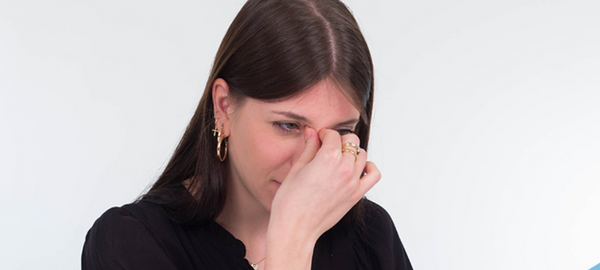

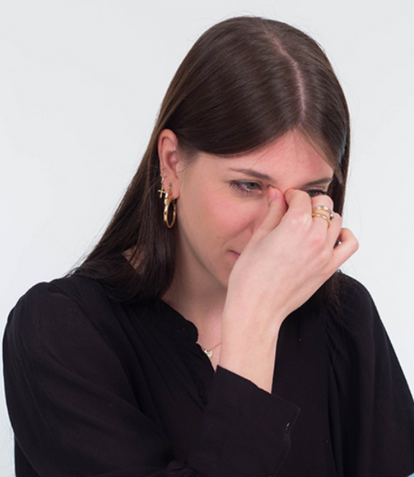
What Is Ocular Hypertension?
The term ‘hypertension’ refers to high blood pressure and ocular hypertension is a condition where the intraocular pressure in your eyes exceeds a healthy eye pressure range.
The eye pressure is measured in millimeters of mercury and a value above 21 usually indicates hypertension of the eyes.
Sustained over an extended period of time, this can damage the optic nerve causing glaucoma, an incurable eye disease which can lead to blindness in the worst of cases.
What is ocular hypertension?
Ocular hypertension is the result of an imbalance in aqueous humour.
Aqueous humour is a clear fluid that flows through the pupil and the chamber of the eye.
If the ciliary body produces too much aqueous, the pressure in the eye increases, causing ocular hypertension.
Your ocular pressure may also be beyond the normal and healthy scope where too little of the fluid is drained away. The progress of the condition from ocular hypertension to glaucoma is slow.
People with ocular hypertension can still have healthy optic nerves (when testing peripheral vision). In short the condition is not immediately evident.
Causes of ocular hypertension
There are a number of factors which can cause the condition including: smoking, diabetes, heart disease, excessive consumption of salt, red meat, alcohol, sugar and other eye conditions.
Some medications can also cause ocular hypertension in some individuals e.g. steroid medicines used to treat asthma.
If you’ve had an injury to the eye, a side effect can be disruption to the balance of aqueous production/drainage.
Other factors such as race and genetics also predispose some individuals to the condition.
Age is another factor as intraocular pressure increases slowly with age.
Adults over the age of forty are at greater risk than their younger counterparts.
Those of African descent as well as those with a family history of ocular hypertension or glaucoma are also more likely to develop the condition.
Gender wise, men have a higher risk of developing glaucoma whereas women are more likely to develop ocular hypertension.
Symptoms of ocular hypertension
Common symptoms of ocular hypertension include blurred vision and without treatment, bleeding in the eye but this is often in the latter stages.
It is important to have regular eye exams as this is the easiest and safest way to detect how healthy your eyes are and if there are any disruptions to the aqueous humour.
Glaucoma is a condition which cannot be reversed once developed so prevention really is the best cure.
How to reduce high eye pressure
There is no guaranteed way to prevent hypertension, but a good strategy would be to have a healthy and balanced diet, regular exercise and an annual eye exam at the minimum.
This is even more pertinent if you have a history of glaucoma in your family.
What Is Ocular Hypertension?
The term ‘hypertension’ refers to high blood pressure and ocular hypertension is a condition where the intraocular pressure in your eyes exceeds a healthy eye pressure range.
The eye pressure is measured in millimeters of mercury and a value above 21 usually indicates hypertension of the eyes.
Sustained over an extended period of time, this can damage the optic nerve causing glaucoma, an incurable eye disease which can lead to blindness in the worst of cases.
What is ocular hypertension?
Ocular hypertension is the result of an imbalance in aqueous humour.
Aqueous humour is a clear fluid that flows through the pupil and the chamber of the eye.
If the ciliary body produces too much aqueous, the pressure in the eye increases, causing ocular hypertension.
Your ocular pressure may also be beyond the normal and healthy scope where too little of the fluid is drained away. The progress of the condition from ocular hypertension to glaucoma is slow.
People with ocular hypertension can still have healthy optic nerves (when testing peripheral vision). In short the condition is not immediately evident.
Causes of ocular hypertension
There are a number of factors which can cause the condition including: smoking, diabetes, heart disease, excessive consumption of salt, red meat, alcohol, sugar and other eye conditions.
Some medications can also cause ocular hypertension in some individuals e.g. steroid medicines used to treat asthma.
If you’ve had an injury to the eye, a side effect can be disruption to the balance of aqueous production/drainage.
Other factors such as race and genetics also predispose some individuals to the condition.
Age is another factor as intraocular pressure increases slowly with age.
Adults over the age of forty are at greater risk than their younger counterparts.
Those of African descent as well as those with a family history of ocular hypertension or glaucoma are also more likely to develop the condition.
Gender wise, men have a higher risk of developing glaucoma whereas women are more likely to develop ocular hypertension.
Symptoms of ocular hypertension
Common symptoms of ocular hypertension include blurred vision and without treatment, bleeding in the eye but this is often in the latter stages.
It is important to have regular eye exams as this is the easiest and safest way to detect how healthy your eyes are and if there are any disruptions to the aqueous humour.
Glaucoma is a condition which cannot be reversed once developed so prevention really is the best cure.
How to reduce high eye pressure
There is no guaranteed way to prevent hypertension, but a good strategy would be to have a healthy and balanced diet, regular exercise and an annual eye exam at the minimum.
This is even more pertinent if you have a history of glaucoma in your family.
Is Your Medication Affecting Your Vision?
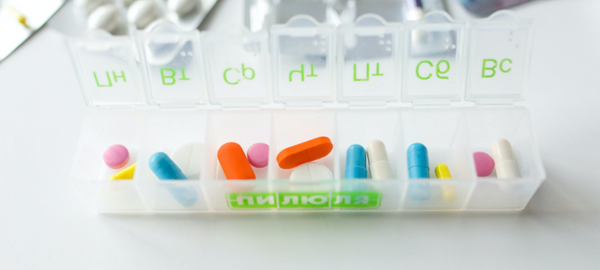

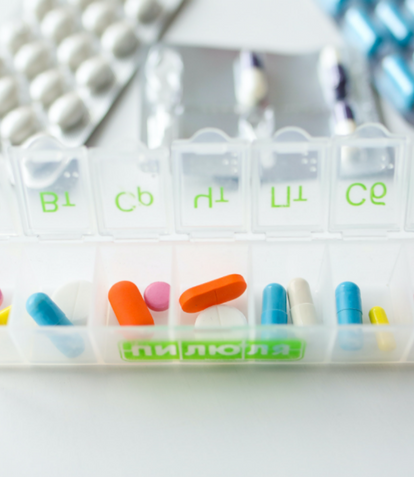
Is Your Medication Affecting Your Vision?
All medications come with potential side effects but it can be easy to overlook the connection between your eye health and your medications. There are many medications that can cause eye problems, such as blurred vision or dry eye. While most vision or eye health side effects caused by medication are minor and non-severe, you should always speak with your doctor if you are experiencing any sudden vision changes.
In some cases, vision problems related to your medication could be severe and should be treated immediately.
Blurred Vision
Many medications list temporary blurred vision as a potential side effect, but there are some with higher reports than others. These are two popular medications that could cause blurry vision:
- • Meloxicam: Meloxicam is an anti-inflammatory drug used to reduce hormones that cause inflammation and pain in the body. Ask your doctor if you are experiencing blurry vision while taking this medication.
- • Alendronate(Fosamax): Alendronate is used to treat and prevent osteoporosis. Abnormal or blurred vision is a listed symptom that should be addressed by a medical professional if occurring.
Dry Eye
Dry eye syndrome is a common condition for many people, characterized by dry itchy eyes. These are a few medications that could be causing your dry eyes:
- • Antidepressants:Antidepressants are one common medication that could cause eye dryness in patients. Sertraline (Zoloft) and Paroxetine (Paxil) are two examples of commonly prescribed antidepressants that could affect your eye health.
- • Isotretinoin(Accutane): This mediation is typically used to treat acne and could have many different effects on your eyes, dry eye being one of the most common along with sensitivity to bright light.
Find out more about causes and treatments for dry eye here.
Intraoperative Floppy Iris Syndrome (IFIS)
IFIS is characterised by a flacid iris that can cause problems for cataract surgery patients. Medication is a common listed cause of IFIS.
- • Tamsulosin(Flomax):Tamsulosin is prescribed to treat men with an enlarged prostate gland. Intraoperative Floppy Iris Syndrome has occurred in some patients taking this medication. Patients planning on cataract or glaucoma surgery should first tell your ophthalmologist if they are taking this medication.
Glaucoma
Glaucoma is a pressure condition of the eye that can cause gradual loss of vision. While Glaucoma is typically caused by higher than normal pressure inside the eyeball, some medications are thought to increase the risk of Glaucoma.
- • Topiramate: Topiramate is typically used to treat epilepsy and prevent migraine headaches. It’s possible that this medication could cause acute Glaucoma, which could damage the optic nerve and affect other areas of vision as well.
- • Corticosteroids: Corticosteroids are medications that lower inflammation in the body and can be used to treat diseases such as asthma or arthritis. This medication could raise the intraocular pressure, increasing the risk of Glaucoma after continual use.
Improving your diet is another way to maintain good health. Read about what foods you can eat to better protect your eyes here.
Is Your Medication Affecting Your Vision?
All medications come with potential side effects but it can be easy to overlook the connection between your eye health and your medications. There are many medications that can cause eye problems, such as blurred vision or dry eye. While most vision or eye health side effects caused by medication are minor and non-severe, you should always speak with your doctor if you are experiencing any sudden vision changes.
In some cases, vision problems related to your medication could be severe and should be treated immediately.
Blurred Vision
Many medications list temporary blurred vision as a potential side effect, but there are some with higher reports than others. These are two popular medications that could cause blurry vision:
- • Meloxicam: Meloxicam is an anti-inflammatory drug used to reduce hormones that cause inflammation and pain in the body. Ask your doctor if you are experiencing blurry vision while taking this medication.
- • Alendronate(Fosamax): Alendronate is used to treat and prevent osteoporosis. Abnormal or blurred vision is a listed symptom that should be addressed by a medical professional if occurring.
Dry Eye
Dry eye syndrome is a common condition for many people, characterised by dry itchy eyes. These are a few medications that could be causing your dry eyes:
- • Antidepressants: Antidepressants are one common medication that could cause eye dryness in patients. Sertraline (Zoloft) and Paroxetine (Paxil) are two examples of commonly prescribed antidepressants that could affect your eye health.
- • Isotretinoin(Accutane): This medication is typically used to treat acne and could have many different effects on your eyes, dry eye being one of the most common, along with sensitivity to bright light.
Find out more about causes and treatments for dry eye here.
Intraoperative Floppy Iris Syndrome (IFIS)
IFIS is characterized by a flaccid iris that can cause problems for cataract surgery patients. Medication is a common listed cause of IFIS.
- • Tamsulosin(Flomax): Tamsulosin is prescribed to treat men with an enlarged prostate gland. Intraoperative Floppy Iris Syndrome has occurred in some patients taking this medication. Patients planning on cataract or glaucoma surgery should first tell your ophthalmologist if they are taking this medication.
Glaucoma
Glaucoma is a pressure condition of the eye that can cause gradual loss of vision. While Glaucoma is typically caused by higher than normal pressure inside the eyeball, some medications are thought to increase the risk of Glaucoma.
- • Topiramate: Topiramate is typically used to treat epilepsy and prevent migraine headaches. It’s possible that this medication could cause acute Glaucoma, which could damage the optic nerve and affect other areas of vision as well.
- • Corticosteroids: Corticosteroids are medications that lower inflammation in the body and can be used to treat diseases such as asthma or arthritis. This medication could raise the intraocular pressure, increasing the risk of Glaucoma after continual use.
Improving your diet is another way to maintain good health. Read about what foods you can eat to better protect your eyes here.








































